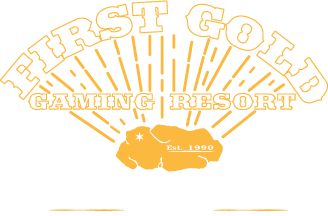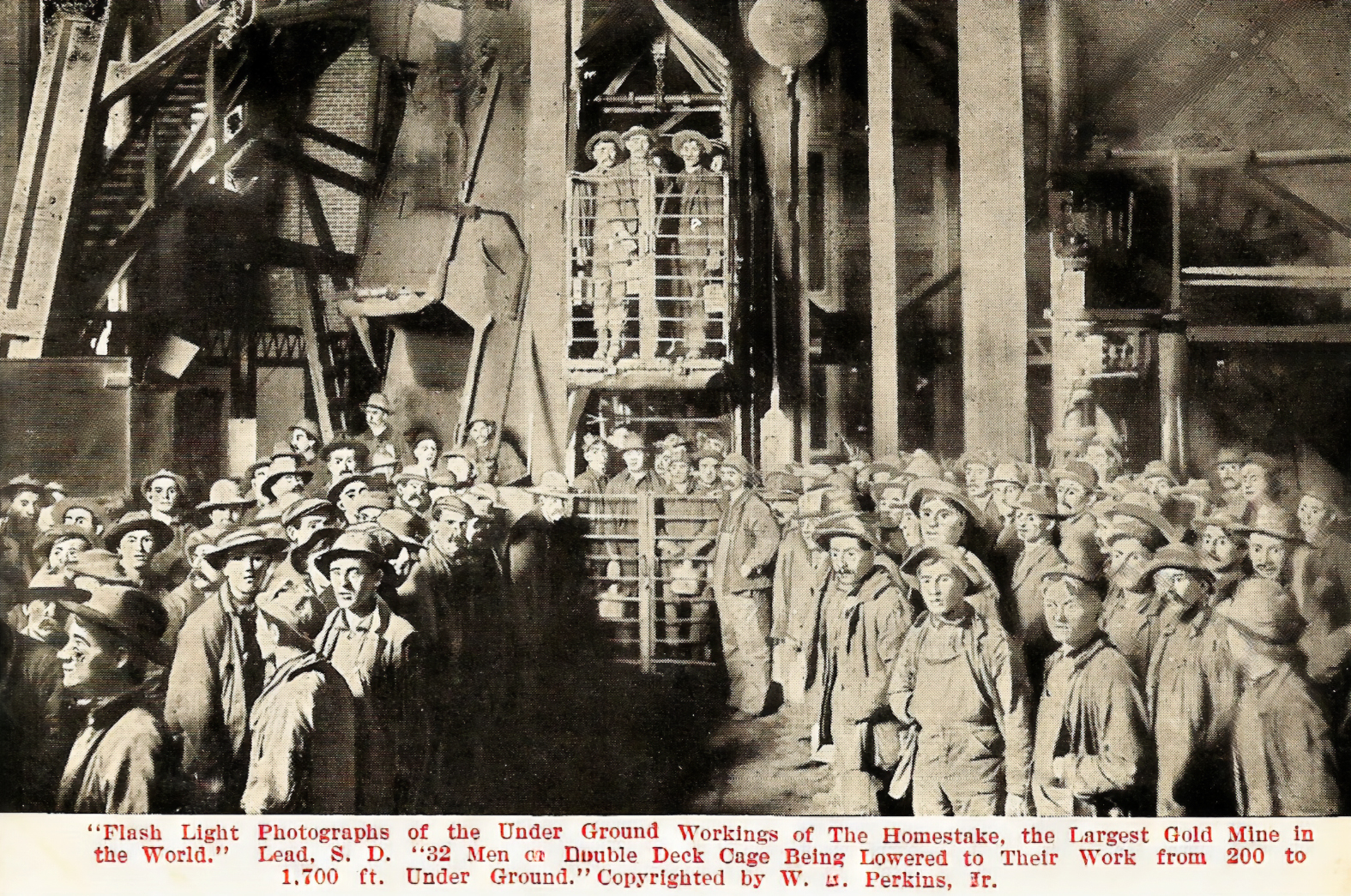Throughout 2025, we’ll showcase the Homestake Mining Company, a cornerstone of our local heritage. This month’s featured photo shows us a large group of Homestake Mining Company Employees on the 1,700-foot level.
Under the photo reads, “Flash Light Photographs of the Under Ground Workings of the Homestake, the Largest Gold Mine in the World. Lead, S.D. 32 Men or Double Deck Cage Being Lowered to Their Work from 200 to 1,700 ft. Under Ground.”
The Homestake Mining Company in Lead began in 1877 and operated until 2001. It was the deepest, longest-operating and most profitable gold mine in the western hemisphere.
Miners worked long hours in dangerous conditions – and the depth of the mine added to the danger. Fire was especially hazardous; it was difficult to evacuate, and sometimes the only way to put out the fire was by flooding the mine.
Despite the risks, the mine employed thousands of people and played a pivotal role in the establishment of Lead as a community. During its long run, it only stopped mining during World War II when the U.S. War Production Board ordered gold mining to cease. It then made hand grenades in support of the war effort. After the war, it returned to gold mining until 2002.
The depth of the mine provided Homestake with a unique opportunity: In 2006, Homestake was transformed into the Sanford Underground Research Facility “where scientists probe the depths of space to learn more about our place in the universe.” In addition to cutting edge physics research, the facility provides educational tours and presentations throughout the year.
According to the SURF website, that research started in the 1960s with Raymond Davis Jr.’s Brookhaven Solar Neutrino Experiment to count and capture neutrinos from the sun. Neutrinos are particles that are so small they are hardly affected by gravity to interact with anything else. They are studied by particle physicists but are very difficult to detect because of how small they are. In the years since Homestake re-opened as SURF, it has helped scientists make several breakthroughs, including the LUX dark matter detector.
That history of innovation goes back much further – According to “An Iron Hand in a Velvet Clove: Thomas J. Crier’s Management of the Homestake Mine”, Homestake pioneered the regulated harvest of trees from public land that set the template for other mines. “Grier became the Forest Service’s cause célebre for progressive resource management,” it says. In the mine, Homestake became one of the first large-scale mining operations in the world to use cyanide successfully to process ore and waste concentrates in 1899. Innovation continues in the SURF lab, which in turn continues to enrich Lead and the Black Hills.
We’ve come a long way, but our history will always be rooted in those plucky miners who came to the Black Hills to seek their fortune. In fact, our casino gives you a chance to strike your own First Gold. (No mining equipment required.)
Want to try your luck? Book a room with us. We can’t wait to see you there.

